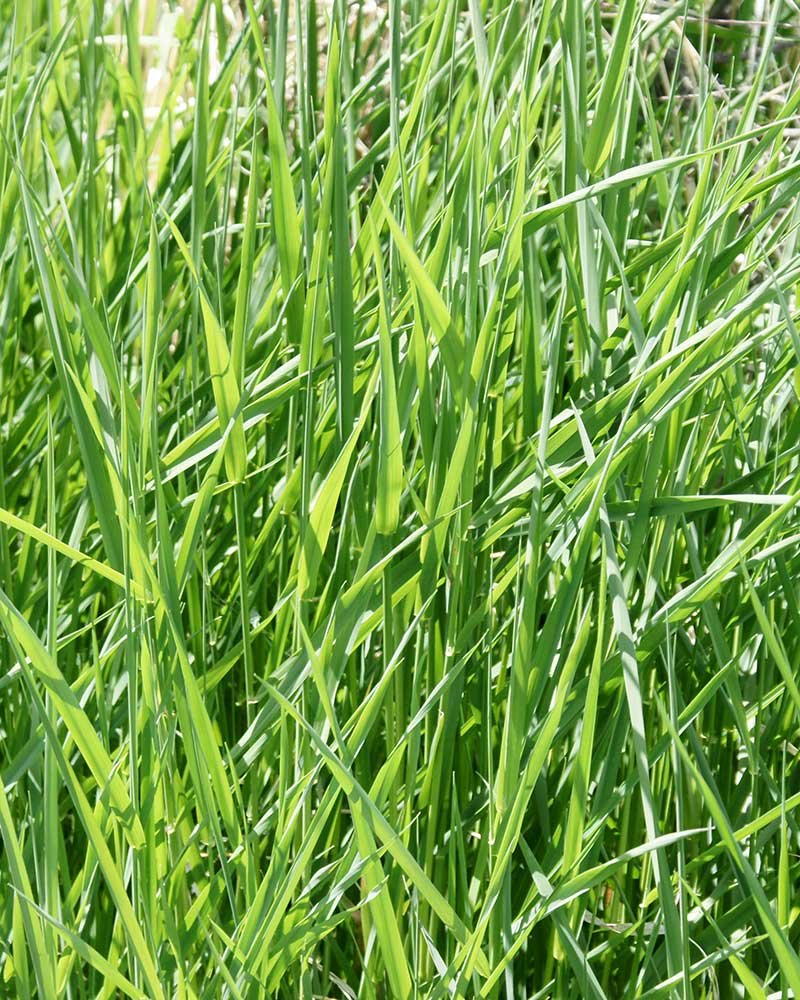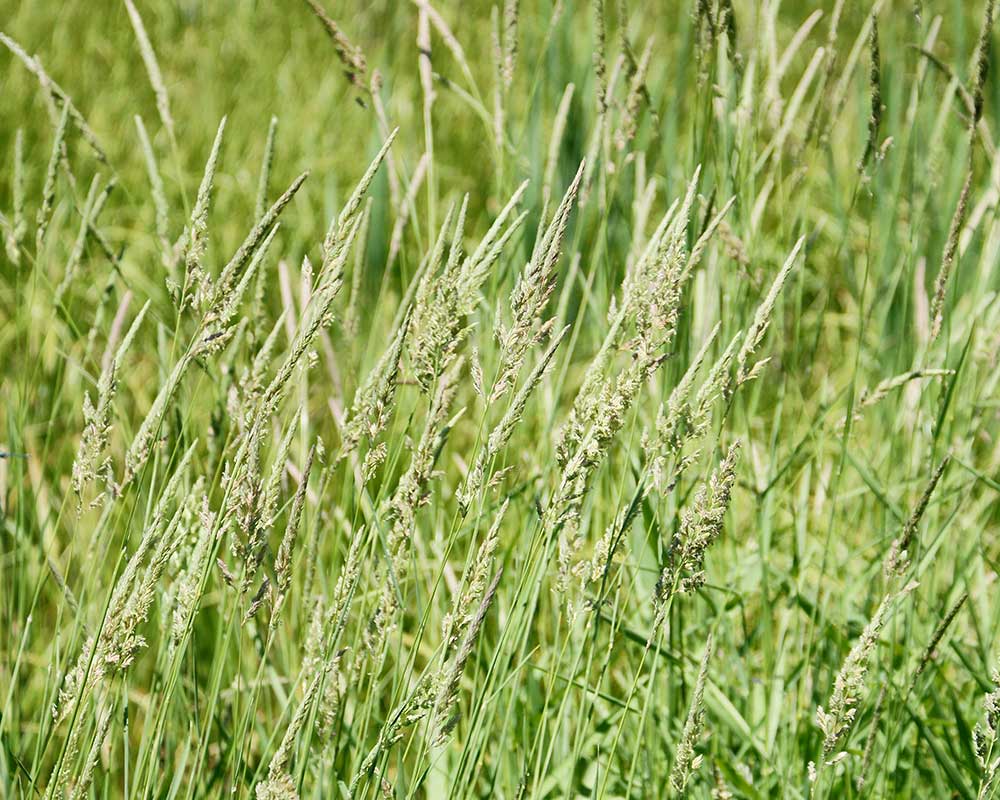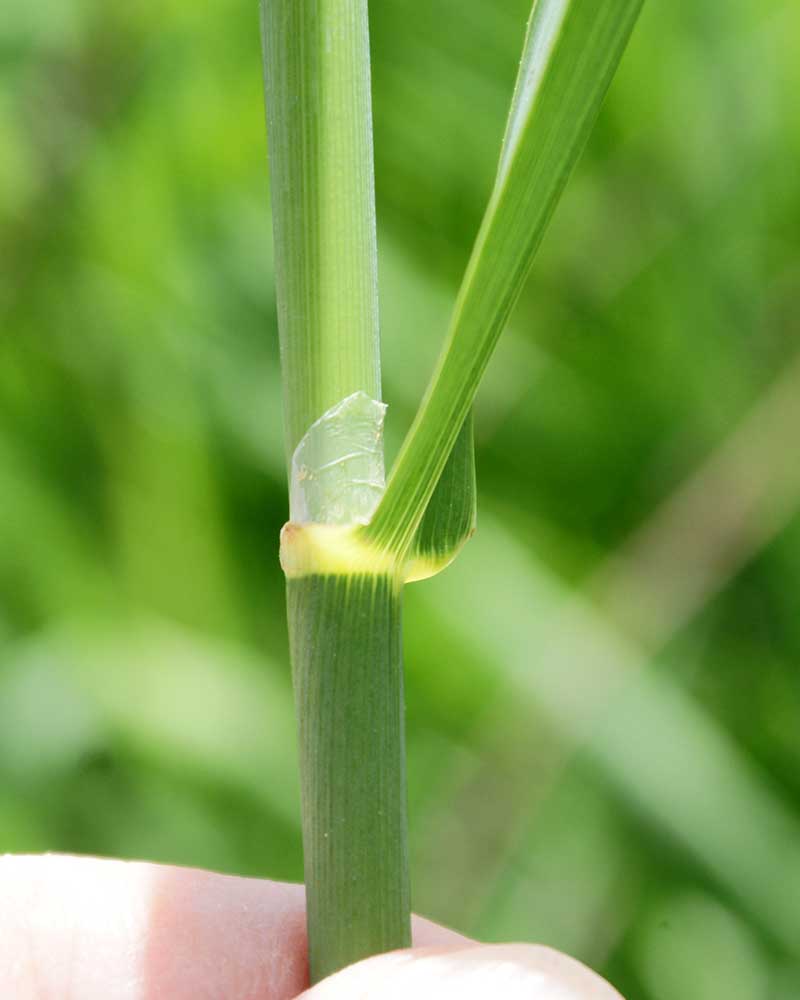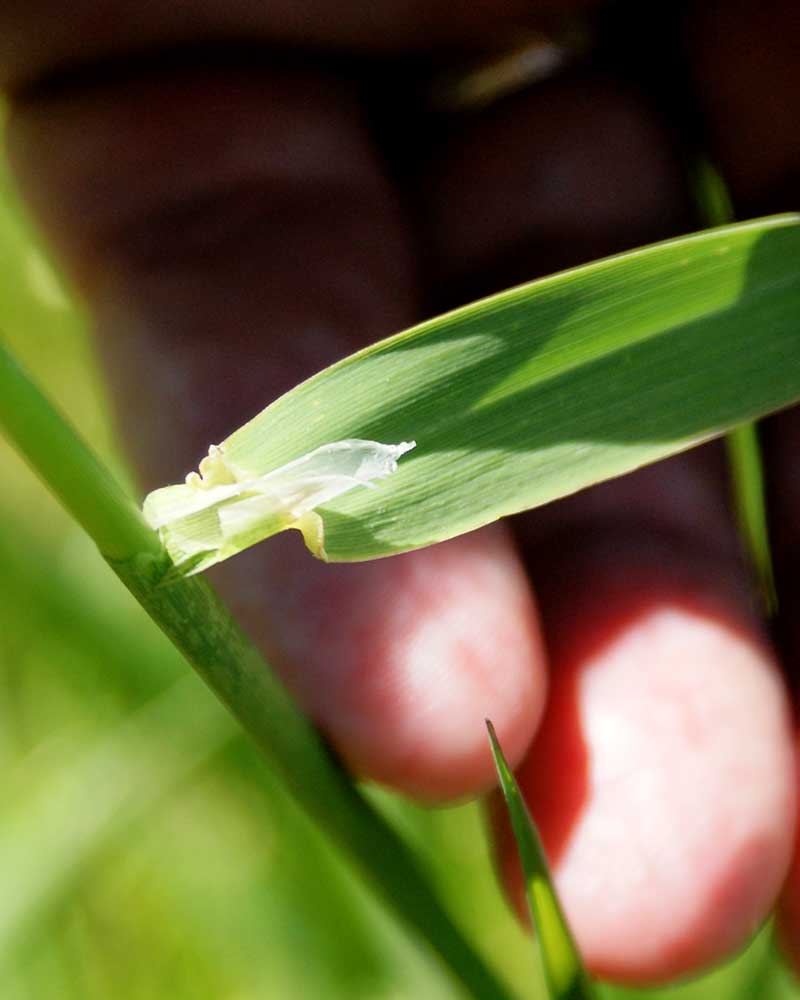Phalaris arundinacea / reed canarygrass
- large, coarse, erect grass
- long, flat blades with pointy tips… from base
- distinct ligule—membranous and long
- large but compact inflorescences (panicles)
- often in dense monocultures, e.g. on river banks
Also known as: canary grass, ribbon grass, gardener’s garters, speargrass
Synonym: Typhoides arundinacea
Of all the grasses in the Valley, this must fall into the category of “pretty easy to identify”. First, it is large and stands tall. The stems can get up to 6 feet tall and more. The inflorescences are big… nothing subtle about them. And in the winter, it forms a mat on the ground that nothing will ever grow through.
Should you need more than that, the leaf blades are flat, rough on both surfaces, and grow mostly from the base of the plant. They’re long and pointy. And if you just like to mess with grass leaves, if you pull back the blade, you’ll see a diagnostic long, membranous ligule. It’s well illustrated in the gallery.
The florescence of reed canary grass is also easily recognized (in comparison with everything else in the Valley). The compact panicles (inflorescence) are erect (or slightly spreading, later in the reproductive stage), and range from 3 to 15 inches long… much bigger than any other grasses around here. The individual branches of the panicles range from 2 to 12 inches long. Single flowers occur in dense clusters in late spring and July, initially green to purple, and change to taupe over time.
Reed canary grass is a dominant species along river banks (albeit not the only one), and seeing it there is the best way to really learn what it looks like. Like while you’re out playing. One good place to see it is just north of the boat ramp at Bates Bridge. As a rhizomatous perennial, It commonly forms large, monoculture stands, and when it dies back in winter, it forms a thick, impenetrable thatch. RCG is one of the first grasses to sprout in spring, growing from a thick rhizome system that dominates the subsurface soil.
Unfortunately, there’s a downside to this. In many places, it’s invasive, especially if the banks (or other wet areas) have been disturbed. Once in, it inhibits native vegetation and reduces biological diversity, i.e. it messes up entire ecosystems. And because it propagates by both seed and rhizomes, once it’s in, it can be nearly impossible to get rid of.
Other than wetlands, reed canary grass also grows on disturbed sites with poor soils or even with industrial contamination. Despite being a wetland kind of plant—highly tolerant of flooding—it is also quite drought tolerant. It is very cold tolerant and will withstand temperatures well below –30 °F. So it can be found places other than Bates Bridge.
The invasive clonal thing is one side of a bigger conundrum. If you were to plant RCG, you better be able to live with it forever. On the other hand, it’s considered a good plant for soil stabilization and restoration, so sometimes, it actually does get planted.
Interesting bits: The grass can also easily be turned into bricks or pellets for burning in biomass power stations. Furthermore, it provides fibers which find use in pulp and paper making processes





